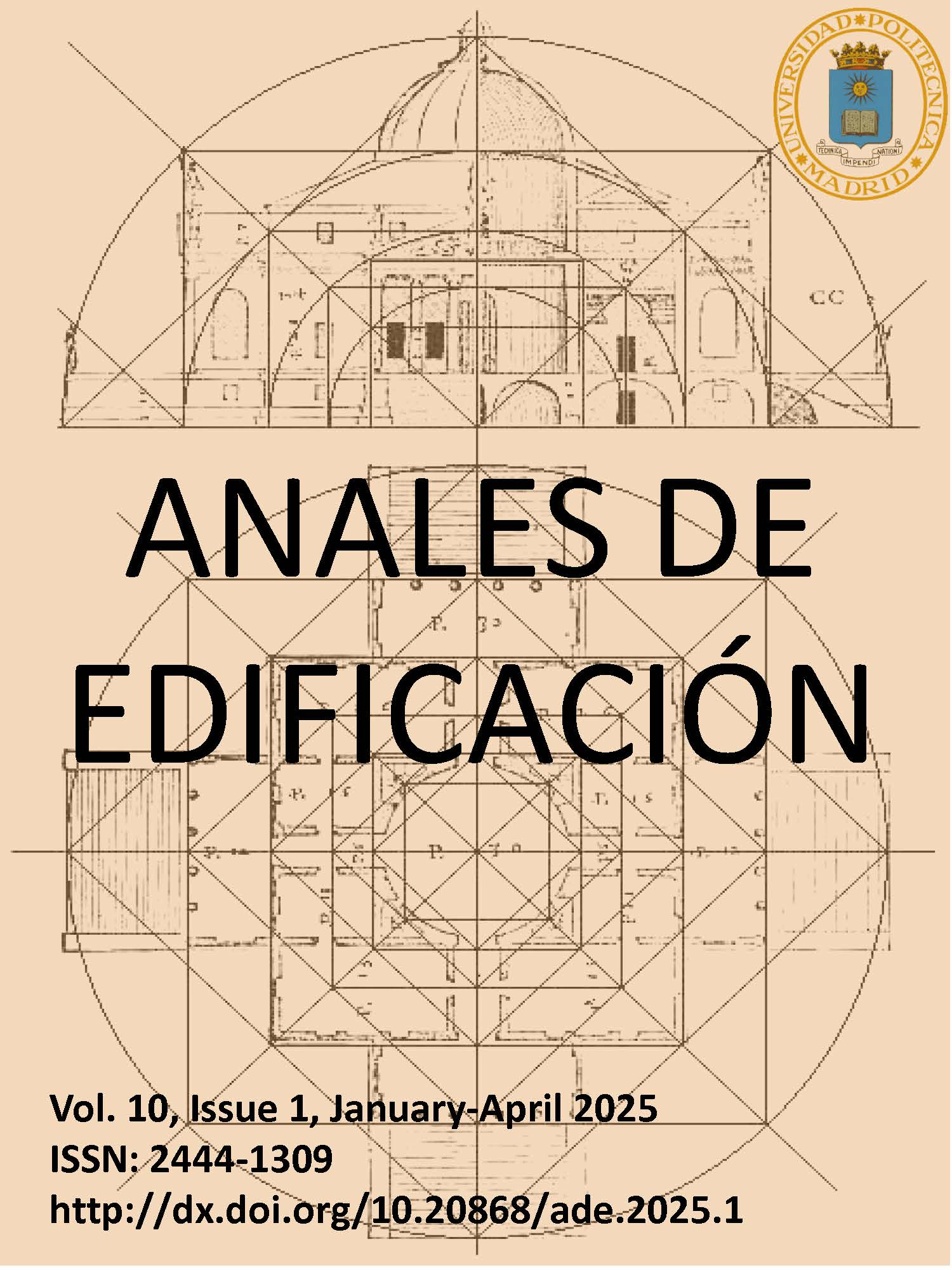Young Mexican architects perception of their workspace during the covid-19 pandemic: a gendered perspective on experiences of physical distancingTeresa
DOI:
https://doi.org/10.20868/ade.2025.5382Keywords:
Work from home, Qualitative research, Confinement, Sentiment analysis, PhotovoiceAbstract
A qualitative study was conducted during the COVID-19 pandemic with a sample of 16 young male and 14 young female architects who teleworked from home during the pandemic. To analyse the data, a method called visual-emotional analysis was applied to, which consists of assessing aspects from both images and feelings perceived through written testimonies provided by the participants.
The aim of this paper is to understand young architects' perceptions of their workspace during social distancing through a gender perspective, and to determine whether there are differences between men's and women's experiences, and if so, and which they are.
Content analysis revealed that women provided more specific descriptions of workspace features (e.g. lighting, space layout) compared to men, who focused on creating a comfortable and functional workspace with less detail..
Downloads
References
1. Abellán García, A., Aceituno Nieto, P., Allende, A., Andrés, A. de, Arenillas, A., Bartomeus, F., Bastolla, U., Benavides, J., Cabal, B., Castillo Belmonte, A. B., Chica Lara, A., Chiner-Oms, Á., Coderch Negra, M. L., Comas, I., Cuerdo-Vilches, T., Damborenea, J. de, Domingo-Calap, P., Durán Heras, M. Á., Etxabe, J., … Marco, J. (2021). Una visión global de la pandemia COVID-19: qué sabemos y qué estamos investigando desde el CSIC. Informe elaborado desde la Plataforma Temática Interdisciplinar Salud Global/Global Health del CSIC. Consejo Superior de Investigaciones Científicas (España). http://hdl.handle.net/10261/236992
2. Bardin, L. (1991). Análisis de contenido (Vol. 89). Ediciones Akal.
3. Cervantes Holguín, E. (n.d.). Resistir la Covid-19. Intersecciones en la Educación de Ciudad Juárez, México.
4. Cuerdo Vilches, T., Navas Martín, M. Á., & Navas Martín, M. (2020). Estudio [COVID-HAB-PAC]: un enfoque cualitativo sobre el confinamiento social (COVID-19), vivienda y habitabilidad en pacientes crónicos y su entorno. Paraninfo Digital, e32075o–e32075o. http://ciberindex.com/p/pd/e32075o
5. Cuerdo Vilches, T., Oteiza San José, I., & Navas Martín, M. Á. (2020). Proyecto sobre confinamiento social (covid-19), vivienda y habitabilidad [COVID-HAB]. Paraninfo Digital, 14(32), e32066o. http://ciberindex.com/c/pd/e32066o
6. Cuerdo-Vilches, T., & Navas-Martín, M. Á. (2021). Confined Students: A Visual-Emotional Analysis of Study and Rest Spaces in the Homes. International Journal of Environmental Research and Public Health, 18(11), 5506. https://doi.org/10.3390/ijerph18115506
7. Cuerdo-Vilches, T., Navas-Martín, M. Á., March, S., & Oteiza, I. (2021). Adequacy of telework spaces in homes during the lockdown in Madrid, according to socioeconomic factors and home features. Sustainable Cities and Society, 75, 103262. https://doi.org/10.1016/j.scs.2021.103262
8. Cuerdo-Vilches, T., Navas-Martín, M. Á., & Oteiza, I. (2020). A Mixed Approach on Resilience of Spanish Dwellings and Households during COVID-19 Lockdown. Sustainability, 12(23), 10198. https://doi.org/10.3390/su122310198
9. Cuerdo-Vilches, T., Navas-Martín, M. Á., & Oteiza, I. (2021). Working from Home: Is Our Housing Ready? International Journal of Environmental Research and Public Health, 18(14), 7329. https://doi.org/10.3390/ijerph18147329
10. Idris, M., Alkhawaja, L., & Ibrahim, H. (2023). Gender disparities among students at Jordanian universities during COVID-19. International Journal of Educational Development, 99, 102776. https://doi.org/10.1016/J.IJEDUDEV.2023.102776
11. Jaimes Torres, M., Aguilera Portillo, M., Cuerdo-Vilches, T., Oteiza, I., & Navas-Martín, M. Á. (2021). Habitability, Resilience, and Satisfaction in Mexican Homes to COVID-19 Pandemic. International Journal of Environmental Research and Public Health, 18(13), 6993. https://doi.org/10.3390/ijerph18136993
12. Navas-Martín, M. Á., & Cuerdo-Vilches, T. (2023a). A Visual–Emotional Analysis of Perception in the Homes of Chronic Patients during Confinement by COVID-19 in Spain. Architecture 2023, Vol. 3, Pages 107-127, 3(1), 107–127. https://doi.org/10.3390/ARCHITECTURE3010008
13. Navas-Martín, M. Á., & Cuerdo-Vilches, T. (2023b). Natural ventilation as a healthy habit during the first wave of the COVID-19 pandemic: An analysis of the frequency of window opening in Spanish homes. Journal of Building Engineering, 65, 105649. https://doi.org/10.1016/J.JOBE.2022.105649
14. Navas-Martín, M. Á., López-Bueno, J. A., Oteiza, I., & Cuerdo-Vilches, T. (2021). Routines, Time Dedication and Habit Changes in Spanish Homes during the COVID-19 Lockdown. A Large Cross-Sectional Survey. International Journal of Environmental Research and Public Health, 18(22), 12176. https://doi.org/10.3390/ijerph182212176
15. Salas-Pilco, S. Z., Yang, Y., & Zhang, Z. (2022). Student engagement in online learning in Latin American higher education during the COVID-19 pandemic: A systematic review. British Journal of Educational Technology, 53(3), 593–619. https://doi.org/10.1111/BJET.13190
16. World Health Organization. (2020a). Director-General’s opening remarks at the media briefing on COVID-19. https://www.who.int/dg/speeches/detail/who-director-general-s-opening-remarks-at-the-media-briefing-on-covid-19---11-march-2020
17. World Health Organization. (2020b). Novel Coronavirus ( 2019-nCoV): situation report, 10
Downloads
Published
Issue
Section
License
Copyright (c) 2025 Autor / BY-NC

This work is licensed under a Creative Commons Attribution-NonCommercial-NoDerivatives 4.0 International License.
Anales de Edificación does not charge authors for processing or publishing an article and provides immediate Open Access to its content. All content is available free of charge to the user or his institution. Users are permitted to read, download, copy, distribute, print, search or link to the full text of articles, or use them for any other lawful purpose, without prior permission from the publisher or author. This is in accordance with the BOAI definition of open access.
- Authors retain the copyright and grant to the journal the right to a Creative Commons attribution / Non-Commercial / Non-Derivative 4.0 International (CC BY NC ND) License that allows others to share the work with an acknowledgement of authorship and non-commercial use.
- Authors may separately establish additional agreements for the non-exclusive distribution of the version of the work published in the journal (for example, placing it in an institutional repository or publishing it in a book).
Unless otherwise indicated, all contents of the electronic edition are distributed under a Creative Commons license.












